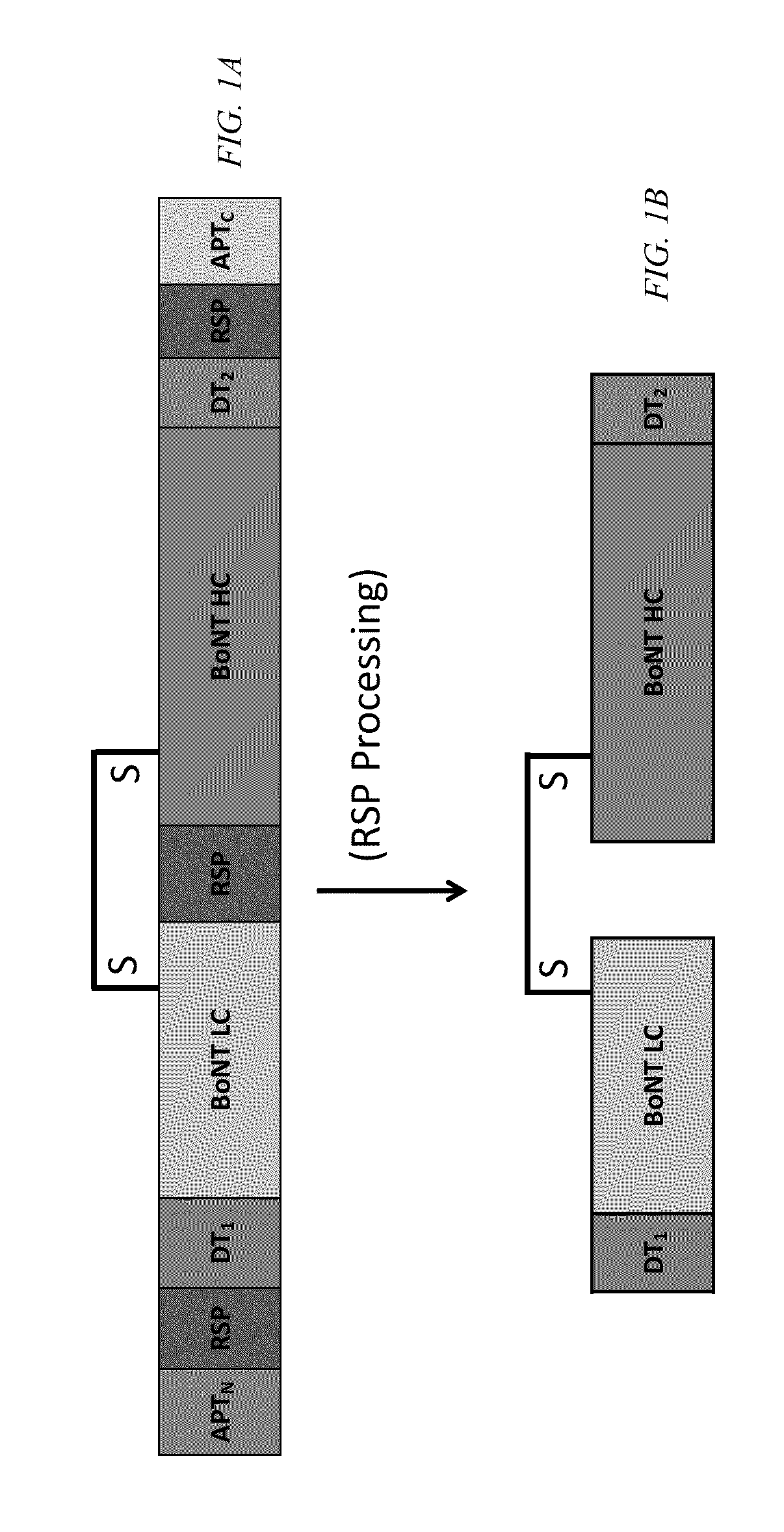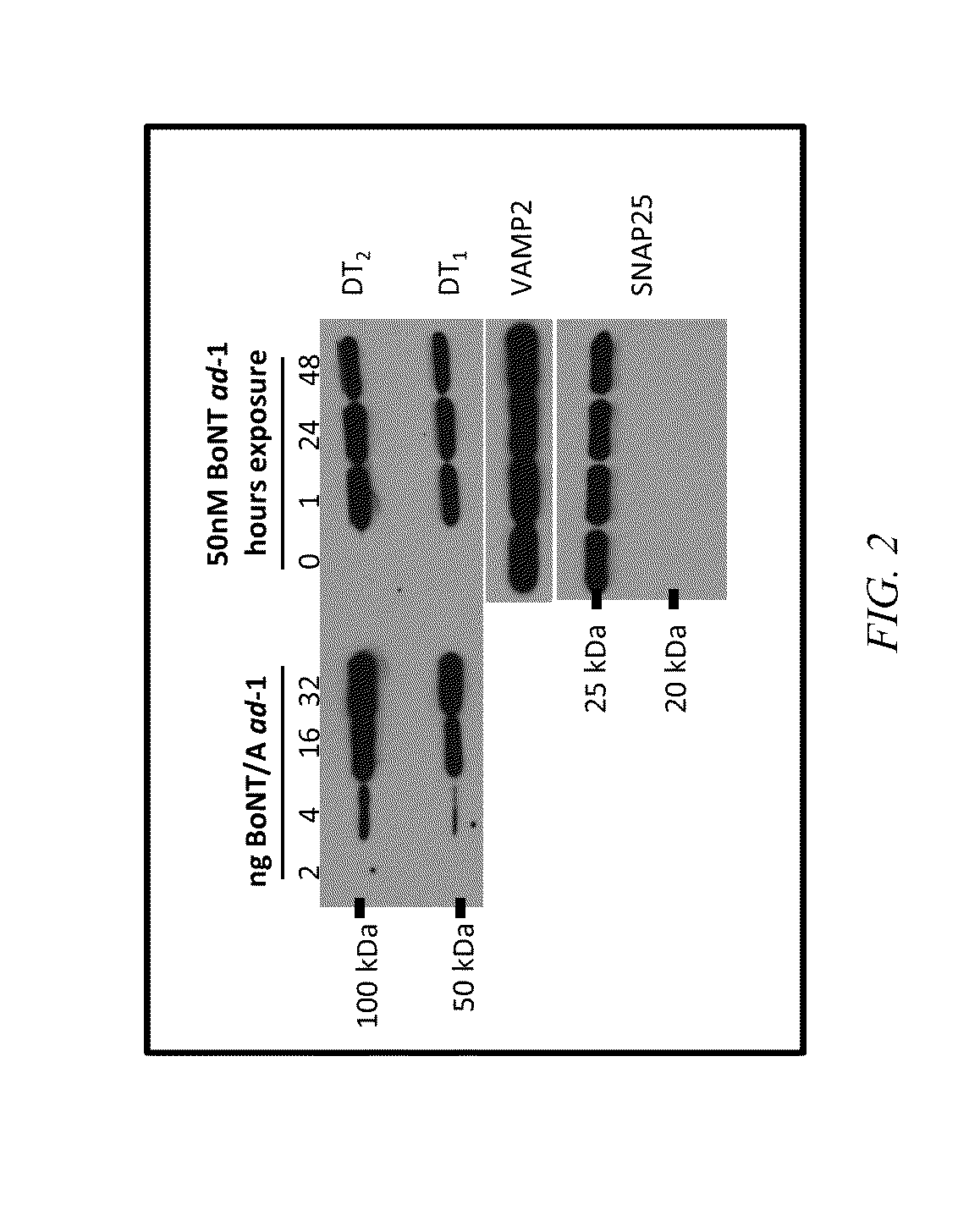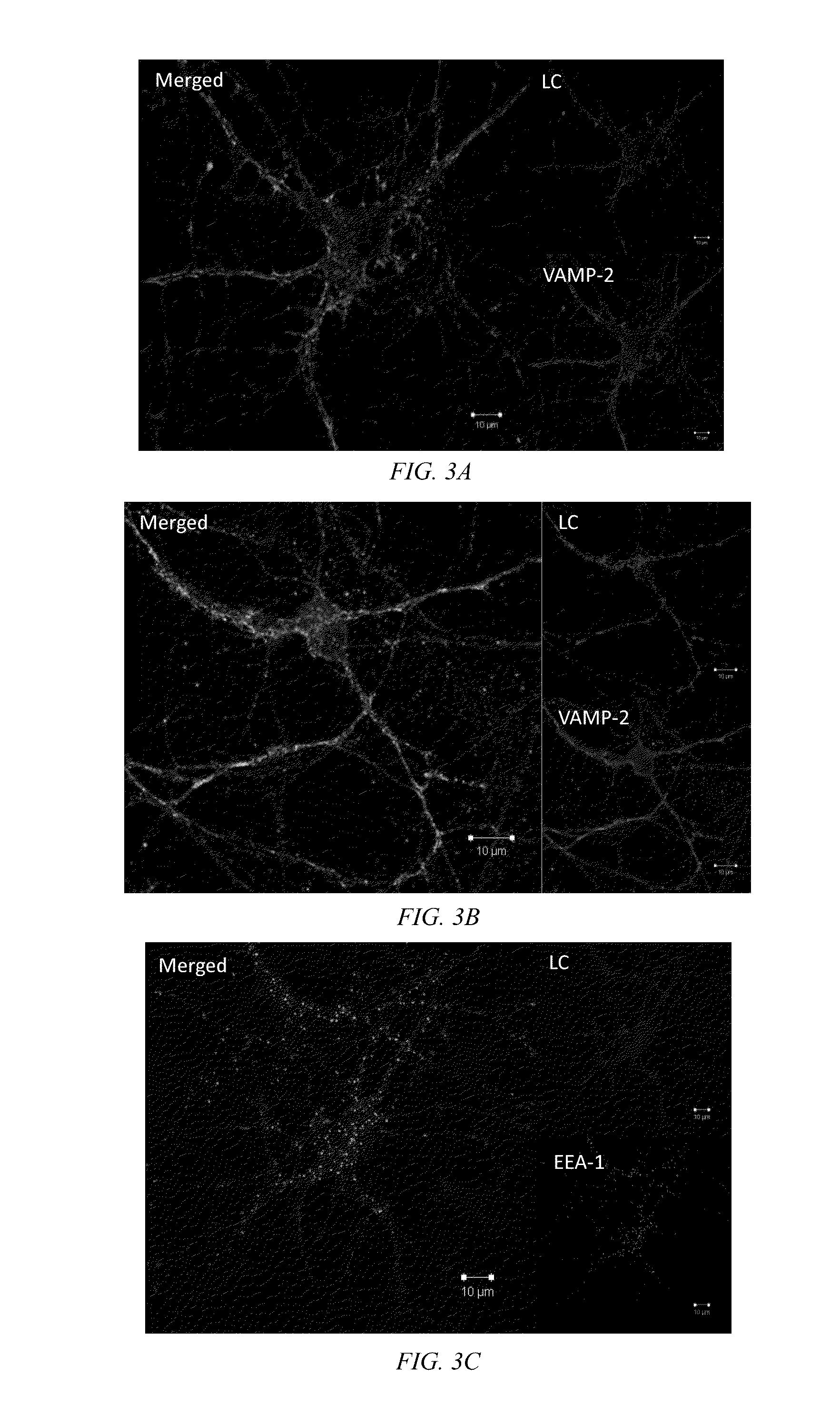Clostridial neurotoxin fusion proteins, propeptide fusions, their expression, and use
a neurotoxin and fusion protein technology, applied in the field of clostridial neurotoxin fusion proteins, propeptide fusions, their expression, etc., can solve the problems of not being able to directly gain access to targets inside the cytoplasmic compartment of cells, limitations for therapeutic applications, and well-known limitations for use in therapeutic products
- Summary
- Abstract
- Description
- Claims
- Application Information
AI Technical Summary
Benefits of technology
Problems solved by technology
Method used
Image
Examples
example 1
Atoxic Derivative Devoid of SNAP-25 Activity to Deliver Single Chain Antibodies into the Cytosol of Neurons
[0224]Materials and Methods
[0225]Expression of Botulinum Neurotoxin a Atoxic Derivatives
[0226]The full-length single forms of the BoNT / A ad discussed below were bioengineered, expressed, and purified, and then converted to the di-chain by treatment with TEV protease as described before (U.S. Pat. No. 8,980,284 to Ichtchenko and Band, which is hereby incorporated by reference in its entirety).
[0227]Preparation and Maintenance of E19 Rat Hippocampal Neurons
[0228]Time pregnant Sprague-Dawley rats (Taconic) were used to isolate embryonic-day 19 (“E19”) hippocampal neurons. E19 rat hippocampal neurons were prepared from hippocampi according to the protocol of Vicario-Abejón (Vicario-Abejon, “Long-term Culture of Hippocampal Neurons,”Curr. Protoc. Neurosci. Chapter 3: Unit 32 (2004), which is hereby incorporated by reference in its entirety). Bilateral hippocampi were dissected from ...
example 2
BoNT / A Ad-0 as a Delivery Vehicle to Deliver Single Chain Antibodies to the Cytoplasm of Neurons
[0254]Introduction
[0255]It has previously been shown that BoNT / A ad-0 is found at the pre-synaptic region in neuromuscular junctions after systemic administration in vivo. In vitro, BoNT / A ad-0 is internalized into the cytosol of neurons at micromolar concentrations, where the BoNT / A ad-0 light chain co-localizes with synaptic proteins. Local intramuscular administration of BoNT / A ad-0 results in muscle weakness / paralysis, a hallmark of wild-type BoNT / A, demonstrating the pharmacological properties of BoNT / A ad-0 as a neuromodulator.
[0256]In this example, empirical evidence is provided regarding the successful delivery of single chain antibodies using botulinum neurotoxin atoxic derivatives with residual SNAP-25 catalytic activity (BoNT / A ad-0). The catalytic activity of the BoNT / A ad-0 light chain towards SNAP-25 was used as a readout to measure successful delivery of the cargo material;...
example 3
Atoxic Derivative of Botulinum Neurotoxin C (BoNT / C Ad) as a Molecular Vehicle for Targeted Delivery to the Neuronal Cytoplasm
[0278]Introduction
[0279]Methods that enable facile production of recombinant derivatives of botulinum neurotoxins (BoNTs) have been developed, which retain the structural and trafficking properties of wild type (wt) BoNTs. Atoxic derivatives of wt BoNT / A have been described supra. Here, an atoxic derivative of BoNT / C1 with three amino acid substitutions in the catalytic domain of the light chain (E446>A;H449>G;Y591>A), termed BoNT / C ad, was designed, expressed, purified, and evaluated.
[0280]Methods
[0281]The coding sequence for BoNT / C ad was designed to inactivate the light chain protease with minimal disruption of the light chain / heavy chain interactions within the protein heterodimer. Recombinant protein was secreted into culture media as a soluble propeptide. The protein was purified to homogeneity by tandem affinity chromatography and processed with TEV pr...
PUM
| Property | Measurement | Unit |
|---|---|---|
| Concentration | aaaaa | aaaaa |
| Therapeutic | aaaaa | aaaaa |
| Stability | aaaaa | aaaaa |
Abstract
Description
Claims
Application Information
 Login to View More
Login to View More - R&D
- Intellectual Property
- Life Sciences
- Materials
- Tech Scout
- Unparalleled Data Quality
- Higher Quality Content
- 60% Fewer Hallucinations
Browse by: Latest US Patents, China's latest patents, Technical Efficacy Thesaurus, Application Domain, Technology Topic, Popular Technical Reports.
© 2025 PatSnap. All rights reserved.Legal|Privacy policy|Modern Slavery Act Transparency Statement|Sitemap|About US| Contact US: help@patsnap.com



